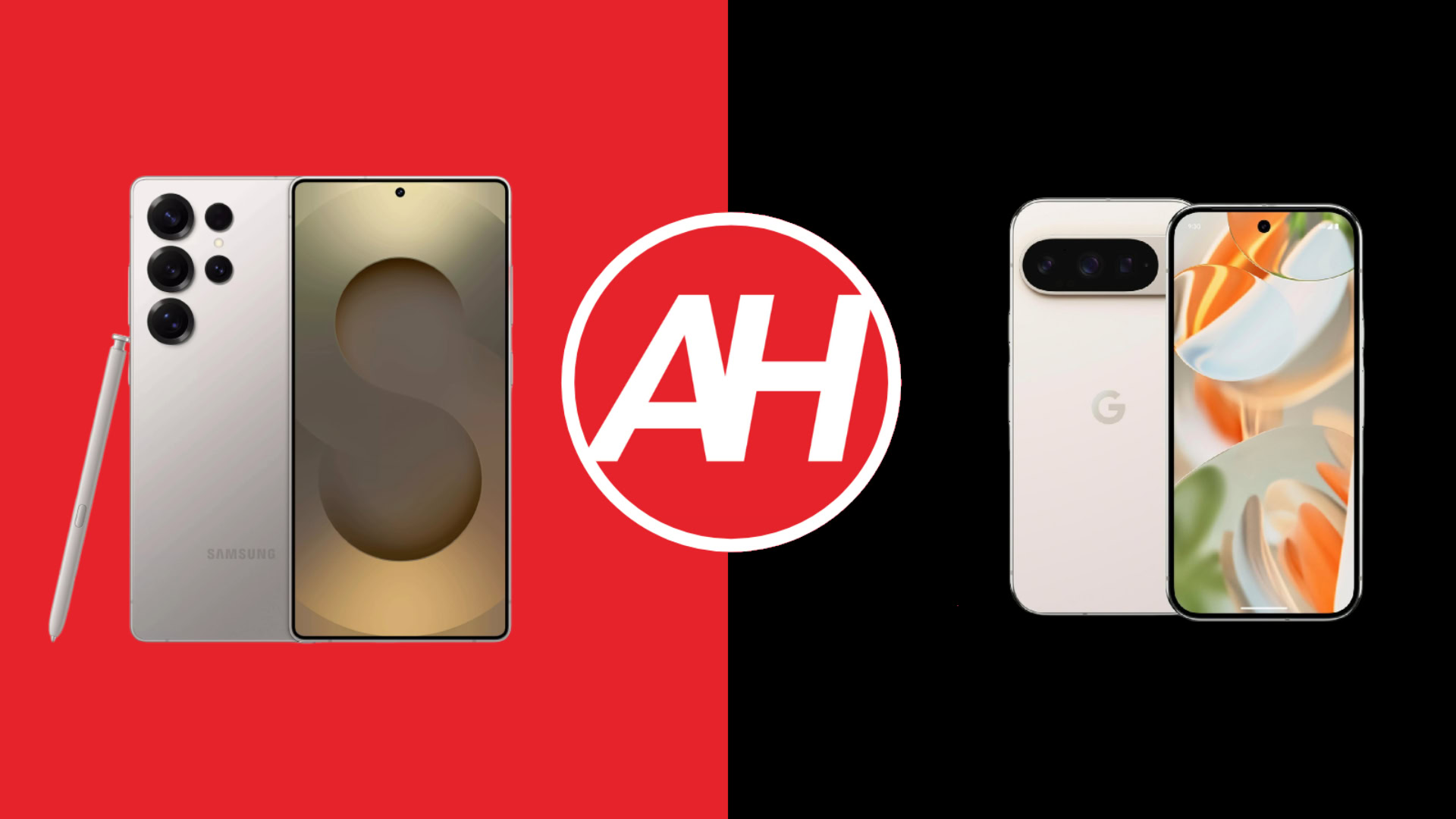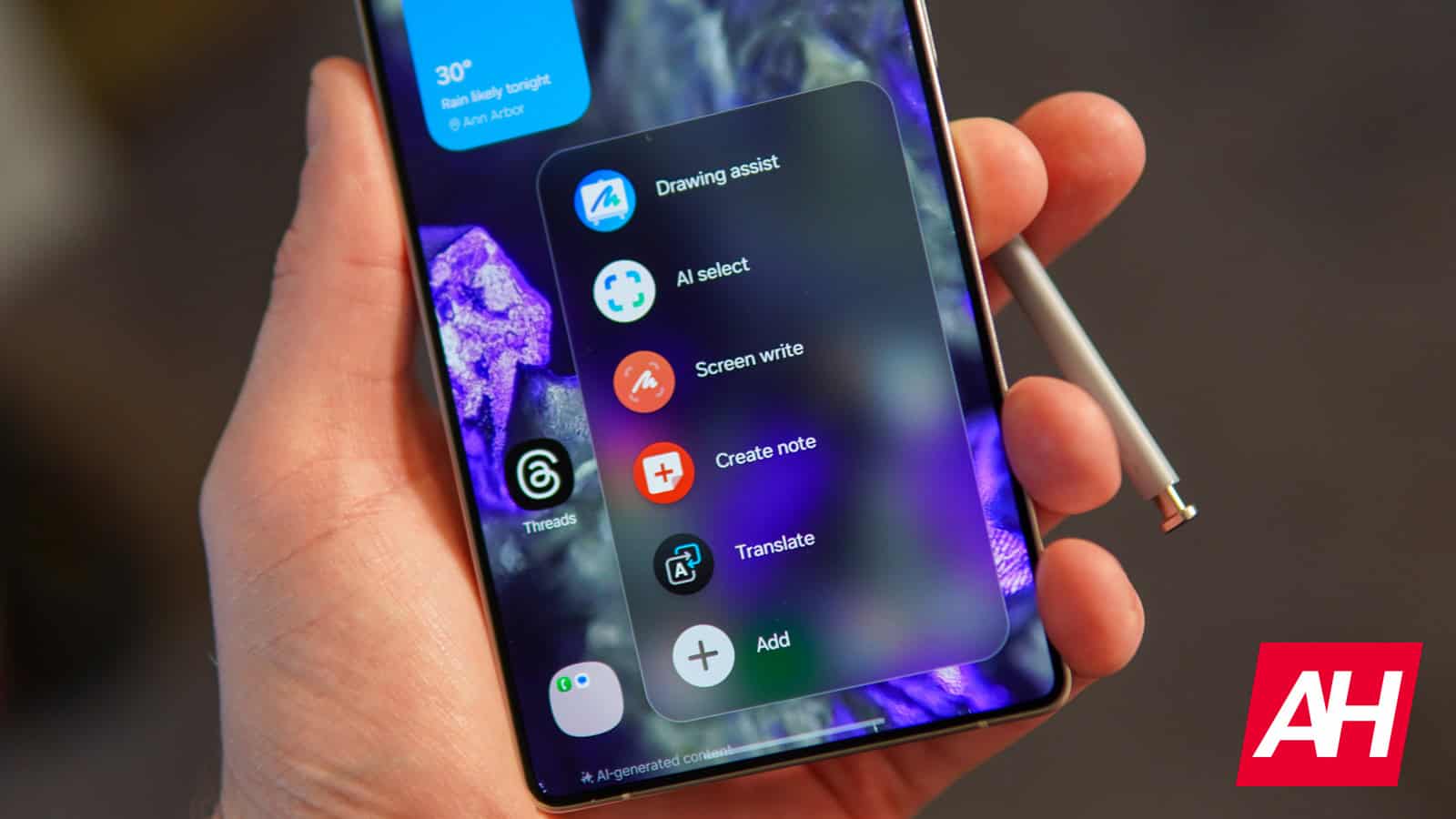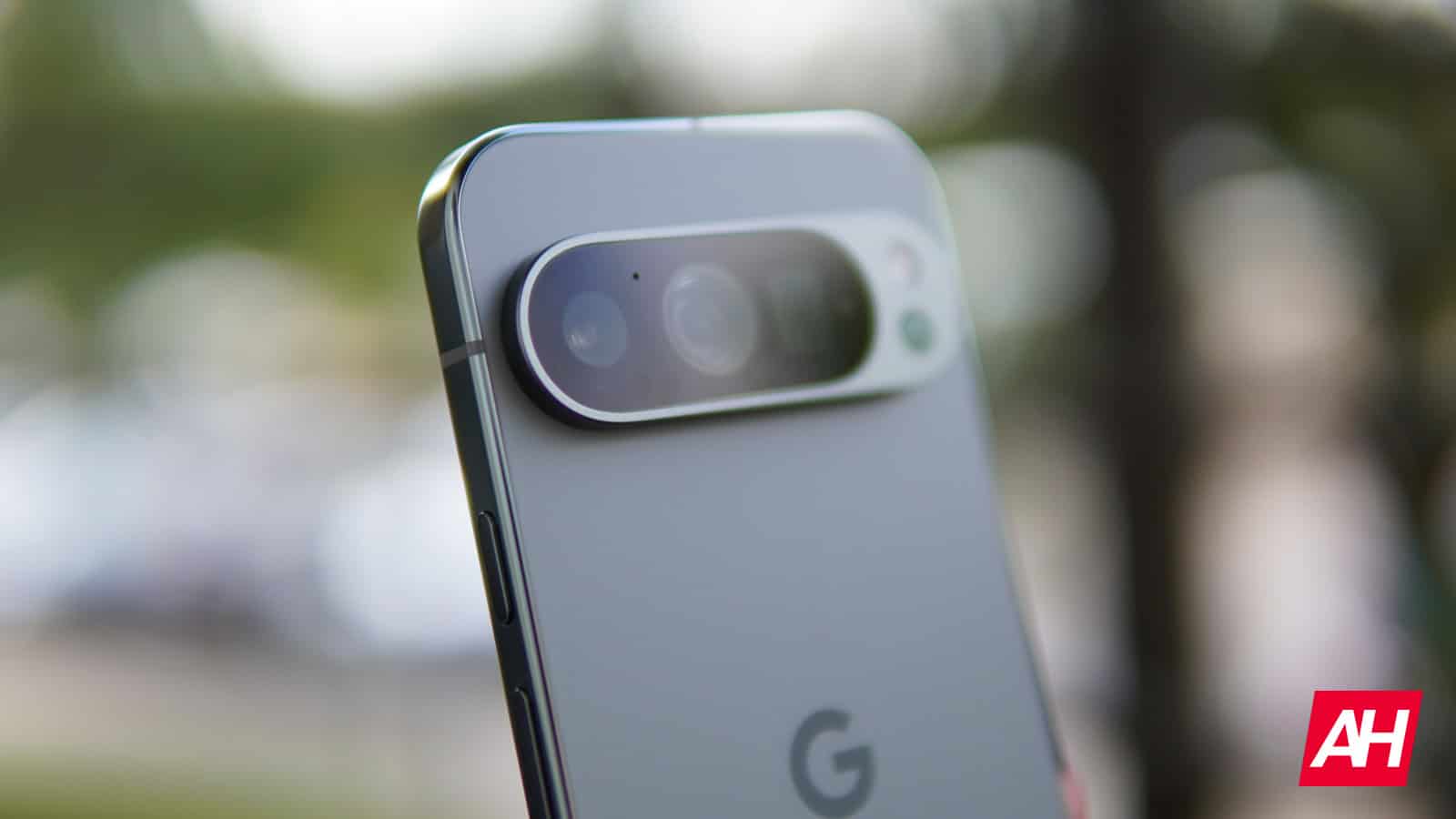
In this round, we're pitting two top-tier, contemporary smartphones against each other—one from Samsung and the other from Google. Specifically, we'll be looking at the specifications of the Samsung Galaxy S25 Ultra versus those of the Google Pixel 9 Pro. Previously, we've contrasted the Galaxy S25 Ultra with the bigger model from Google. Now, our focus shifts to examining how it stacks up against the more compact version of their flagship device. Both phones have distinct characteristics across various aspects.
The Galaxy S25 Ultra stands out as a large-sized flagship device, whereas the Pixel 9 Pro offers a sleeker, smaller form factor. The distinctions between these two become immediately apparent when viewed side-by-side. To start with, we'll outline their specifications before delving into comparisons regarding design, display quality, overall performance, battery endurance, camera capabilities, and sound output. So without further ado, let's dive right in!
Specs
Samsung Galaxy S25 Ultra versus Google Pixel 9 Pro, in that order.
– Screen size :
6.9-inch Dynamic AMOLED 2X display (flat screen with adaptive 120Hz refresh rate, HDR10+ support, up to 2,600 nits peak brightness)
6.3-inch QHD+ OLED display (flat, adaptive 120Hz refresh rate, supports HDR, with up to 3,000 nits maximum brightness)
– Display resolution :
3120 x 1440
2856 x 1280
– SoC :
Qualcomm Snapdragon 8 for Galaxy
Google Tensor G4
– RAM :
16GB (LPDDR5X)
16GB (LPDDR5X)
– Storage :
256GB/512GB/1TB (UFS 4.0)
128GB/256GB/512GB/1TB (UFS 3.1)
– Rear cameras :
The camera system includes a 200MP wide lens with an f/1.7 aperture, OIS, multi-directional PDAF, a 1/1.3-inch sensor, and 0.6-micron pixels. It also features a 50MP ultrawide lens offering a 120-degree field of view, an f/1.9 aperture, dual-pixel PDAF, and 0.7-micron pixels. Additionally, there’s a 10MP telephoto lens equipped with an f/2.4 aperture, OIS, a 1/3.52-inch sensor, dual-pixel PDAF, 1.12-micron pixels, and supports up to 3x optical zoom. Lastly, the setup incorporates a 50MP periscope telephoto lens featuring OIS, a 1/2.52-inch sensor, PDAF capabilities, and offers up to 5x optical zoom.
50MP (wide lens with an f/1.7 aperture, 1.2-micron pixels, OIS, EIS), 48MP (ultra-wide-angle lens featuring an f/1.7 aperture and a field of view of 123 degrees), 48MP (telephoto periscope lens with an f/2.8 aperture, OIS, EIS, capable of up to 5x optical zoom)
– Front cameras :
12 megapixels (wide camera with an aperture of f/2.2, featuring Dual Pixel Phase Detection AutoFocus system, built around a 1/3.2-inch image sensor, paired with a 22 millimeter lens)
42MP (f/2.2 aperture)
– Battery :
5,000mAh
4,700mAh
– Charging :
45 watts wired charging, 15 watts wireless capability (compatible with Qi2 standard), and 4.5 watts for reverse wireless charging ( charger sold separately)
27W wired charging, 21W wireless charging with Pixel Stand, 12W Qi wireless charging, and 5W reverse wireless charging (charger sold separately)
– Dimensions :
162.8 × 77.6 × 8.2 millimeters
152.8 × 72 × 8.5 millimeters
– Weight :
218 grams
199 grams
– Connectivity :
5G, LTE, NFC, Wi-Fi, USB Type-C, Bluetooth 5.4/5.3
– Security :
In-display fingerprint scanner (ultrasonic) & facial scanning
Ultrasonic in-display fingerprint scanner
– OS :
Android 15 featuring One UI 7
Android 14 (upgradable)
– Price :
$1,299+
$999+
– Buy :
Samsung Galaxy S25 Ultra (Samsung.com)
Google Pixel 9 Pro at Best Buy
Samsung Galaxy S25 Ultra versus Google Pixel 9 Pro: Design
The Samsung Galaxy S25 Ultra is constructed from titanium and glass, whereas the Pixel 9 Pro employs aluminum and glass materials. In contrast, Samsung’s top-tier model features more acute angles with narrower borders. Despite having a centrally placed front-facing camera cutout, the hole on the Galaxy S25 Ultra is less prominent and positioned slightly higher up compared to its counterpart. Additionally, both smartphones exhibit even frame widths around their screens, which are notably flat on both models.
The power/lock and volume rocker buttons sit on the right-hand sides of both smartphones. Their positioning is different, however. On the Pixel 9 Pro, the power/lock button is placed above the volume keys, while it’s the other way around on the Galaxy S25 Ultra. Both phones have a flat frame all around. The Galaxy S25 Ultra also has the S Pen stylus tucked away in the bottom-left corner.
When flipped over, you'll notice two distinct backplates. While they are both flat, their designs differ significantly. The Galaxy S25 Ultra features five individual bumps on the rear, with four dedicated to housing its cameras. On the other hand, the Pixel 9 Pro sports a pill-shaped strip at the back containing all three of its cameras within this single module.
Both gadgets meet the IP68 standards for protection against water and dust ingress. In terms of dimensions, the Galaxy S25 Ultra stands out as notably taller and broader; however, it is slightly slimmer compared to the Pixel 9 Pro. Weighing significantly less, the Google device tips the scales at 19 grams lighter, likely due to their differing sizes.
Samsung Galaxy S25 Ultra versus Google Pixel 9 Pro: Screen Comparison
The Samsung Galaxy S25 Ultra features a 6.9-inch 3120 x 1440 Dynamic LTPO AMOLED 2X screen which lies flat and offers support for HDR10+ material. This display adapts its refresh rate between 1 Hz and 120 Hz dynamically. Its maximum luminance reaches up to 2,600 nits, with the screen occupying approximately 92% of the device’s front face. Additionally, this model has a display aspect ratio of 19.5:9, safeguarded by the Gorilla Armor 2 glass provided by Corning.

On the contrary, the Pixel 9 Pro features a 6.3-inch LTPO OLED display with a resolution of 2856 x 1280 pixels. This flat-panel also accommodates HDR10+ content. It boasts an adaptable refresh rate ranging from 1 to 120 Hz. Additionally, it achieves a maximum brightness level of 3,000 nits, and the screen occupies approximately 87% of the device’s front surface. With an aspect ratio of 20:9, the display is safeguarded by Corning's Gorilla Glass Victus 2.
These two screens are both excellent. They're vibrant, with great brightness levels and wide viewing angles. Additionally, their touchscreen responsiveness is top-notch, offering no room for criticism. However, the Galaxy S25 Ultra stands out with significantly slimmer bezels and superior glare resistance due to its Gorilla Armor 2 technology; this aspect isn’t comparable. On another note, neither device features high-frequency PWM dimming capabilities.
Samsung Galaxy S25 Ultra versus Google Pixel 9 Pro: How Do They Compare in Terms of Performance?
The Snapdragon 8Elite powers the Samsung Galaxy S25 Ultra. This chipset is an enhanced version of Qualcomm’s top-performing processor, featuring a 3nm architecture. Additionally, it comes coupled with up to 16GB of LPDDR5X memory within the Galaxy S25 Ultra. The device further utilizes UFS 4.0 flash storage technology. On the other hand, the Pixel 9 Pro operates using the Google Tensor G4 processor, which has a 4nm design. It pairs this CPU with 16GB of LPDDR5X RAM alongside UFS 3.1 flash storage.
Neither device offers expandable storage; however, they both deliver excellent performance. While the Galaxy S25 Ultra appears more responsive when compared directly, the Pixel 9 Pro holds its own with ease. Both phones handle everyday tasks remarkably well, whether you're engaged in light browsing or intensive multi-tasking. Therefore, you have nothing to worry about regarding their functionality.
If you're into gaming, the Galaxy S25 Ultra is a more suitable option for tackling graphics-intensive titles. The Tensor G4 chip isn’t optimized for such tasks, whereas the Galaxy S25 Ultra offers superior performance for these kinds of games. While both devices may become somewhat hot during extended gameplay, they manage this heat reasonably well.
Samsung Galaxy S25 Ultra versus Google Pixel 9 Pro: Battery
The Samsung Galaxy S25 Ultra features a 5,000mAh battery, whereas the Pixel 9 Pro includes a 4,700mAh power cell. Despite the significantly bigger screen on the Galaxy S25 Ultra, this discrepancy isn’t overly consequential. Actually, the 4,700mAh battery should be sufficient for thePixel 9 Pro’s 6.3-inch display. Based on our observations, both devices provide excellent battery performance.
While the Galaxy S25 Ultra certainly comes out on top, it still manages to surpass thePixel 9 Pro when it comes to battery longevity. Both devices provide excellent endurance; hence, you shouldn’t be concerned about running out of power frequently. They excel at extending screen-on duration provided they aren’t being constantly depleted by resource-intensive gaming every day. There are individuals who find that either phone can easily make it through two full days without needing a recharge.
Regarding charging capabilities, the Galaxy S25 Ultra includes support for 45W wired, 15W wireless (Qi2 compatible), and 4.5W reverse wireless charging. In comparison, the Pixel 9 Pro offers 27W wired, up to 21W wireless when using the Pixel Stand, along with 12W of reverse wireless charging. Although both phones exhibit fast-charging speeds, the Galaxy S25 Ultra can be completely charged within approximately one hour. Conversely, it would require around ninety minutes for the Pixel 9 Pro to reach full capacity. Additionally, neither device includes a charger in their respective boxes.
Samsung Galaxy S25 Ultra versus Google Pixel 9 Pro: Camera Comparison
The Samsung Galaxy S25 Ultra features four rear cameras. These include a primary shooter with 200 megapixels using a 1/1.3-inch sensor, an ultra-wide lens offering 50 megapixels and spanning a 120-degree field of view, another ultra-wide module providing 50 megapixels also at 120 degrees, plus a telephoto setup equipped with 10 megapixels along with a 1/3.52-inch sensor size.

In contrast, the Google Pixel 9 Pro comes with one fewer rear camera. Its specifications include a primary 50-megapixel lens equipped with a 1/1.31-inch sensor, an ultra-wide-angle shooter at 48 megapixels featuring a 1/2.55-inch sensor and providing a field of view spanning up to 123 degrees, along with another 48-megapixel periscope telephoto unit sporting a 1/2.55-inch sensor capable of achieving a 5x optical zoom.
Frequently, the Pixel 9 Pro delivered more lifelike color tones in photographs compared to the Galaxy S25 Ultra, which has enhanced this aspect since release but continues to over-saturate hues somewhat. Additionally, we found ourselves favoring the High Dynamic Range captures produced by the Pixel 9 Pro much of the time, as well as its quicker shutter response; however, the Galaxy S25 Ultra remained close in these areas too.
Both devices can deliver impressive zoom photos. Up to 30x magnification, they perform quite well provided there is sufficient lighting. Additionally, both are able to take striking close-up images.
Audio
You'll discover stereo speakers on both of these devices. In fact, they're quite comparable in terms of audio quality, and similarly, their volume levels are adequate as well. There’s certainly nothing to worry about regarding how loudly they can play.
Neither smartphone includes an audio jack. However, you can use your wired headphones through the Type-C ports. The Galaxy S25 Ultra features Bluetooth 5.4, and the Pixel 9 Pro has Bluetooth 5.3, both supporting wireless audio connectivity.
The post Smartphone Showdown: Samsung Galaxy S25 Ultra versus Google Pixel 9 Pro Technical Details appeared first on Android Headlines .
